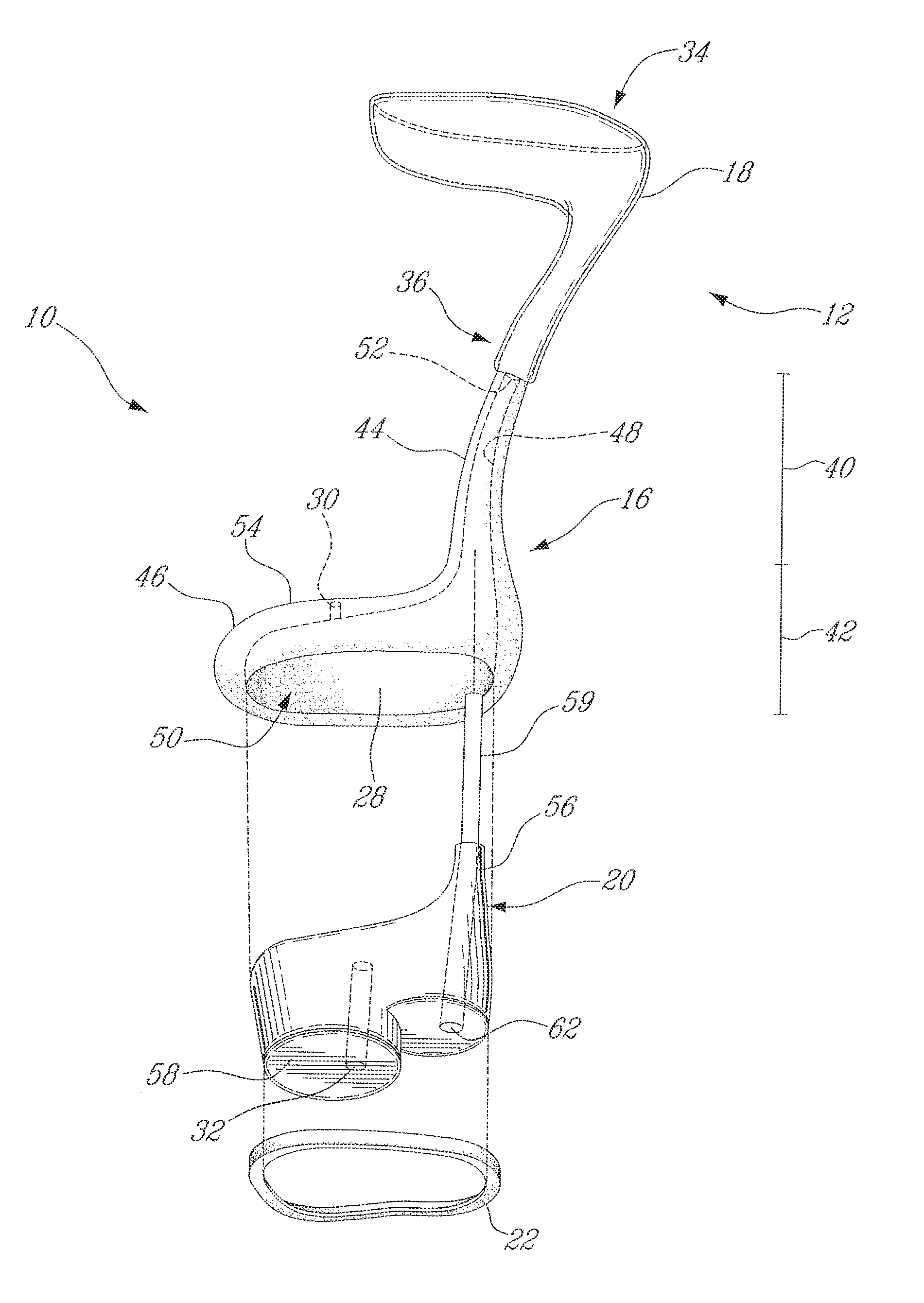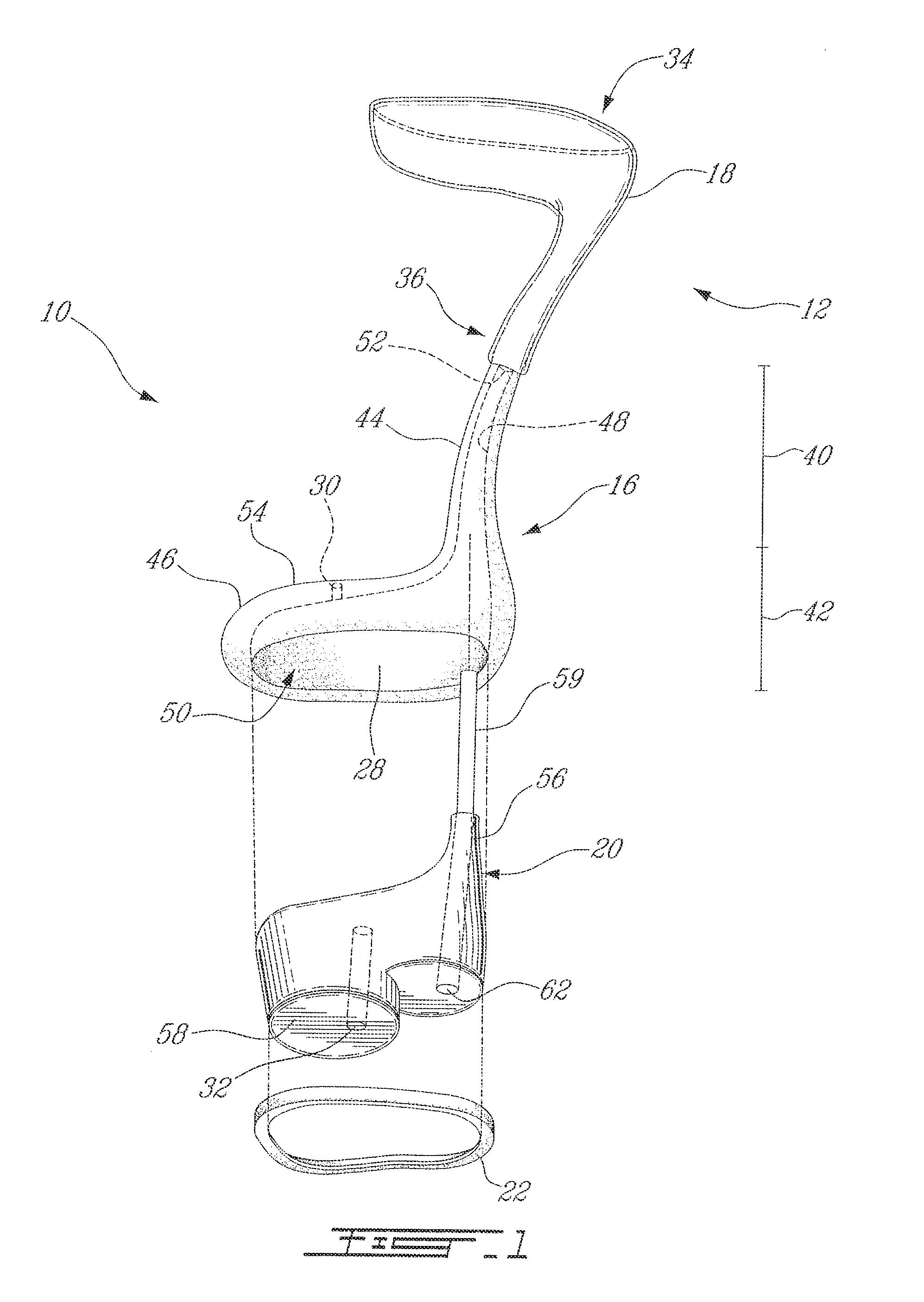Customized in-ear interface for acoustic equipment and method
a technology of in-ear interfaces and acoustic equipment, applied in the field ofinear devices, can solve the problems of time and cost involved in producing customized in-ear interfaces, non-negligible amount of customized in-ear interfaces being rejected, and adding to the delay in receiving an end product by the consumer
- Summary
- Abstract
- Description
- Claims
- Application Information
AI Technical Summary
Benefits of technology
Problems solved by technology
Method used
Image
Examples
Embodiment Construction
[0023]Referring to FIG. 1, there is shown an embodiment of an in-ear interface 10 for adapting acoustic equipment to an ear, for sound transmission or attenuation. According to a preferred embodiment, the in-ear interface 10 will be customized for customers following a sequence of steps described hereinafter, whereby it will be referred to hereinafter as “customized in-ear interface 10” notwithstanding the customizing phase at which the interface 10 is. The in-ear interface 10 consists of an expandable ear module 12 that is custom-fitted to an ear. The in-ear interface 10 also has various supporting components that are adapted for interaction with the ear module 12 and / or the acoustic equipment, to make the final product.
[0024]Referring to FIG. 1, the expandable ear module 12 is shown prior to being configured for customizing. The expandable ear module 12 is made up of a core 16 (e.g., a flexible core) with an integral stretchable sheath 18. According to one embodiment, the supporti...
PUM
| Property | Measurement | Unit |
|---|---|---|
| thickness | aaaaa | aaaaa |
| sound transmittance | aaaaa | aaaaa |
| shape | aaaaa | aaaaa |
Abstract
Description
Claims
Application Information
 Login to View More
Login to View More - R&D
- Intellectual Property
- Life Sciences
- Materials
- Tech Scout
- Unparalleled Data Quality
- Higher Quality Content
- 60% Fewer Hallucinations
Browse by: Latest US Patents, China's latest patents, Technical Efficacy Thesaurus, Application Domain, Technology Topic, Popular Technical Reports.
© 2025 PatSnap. All rights reserved.Legal|Privacy policy|Modern Slavery Act Transparency Statement|Sitemap|About US| Contact US: help@patsnap.com



